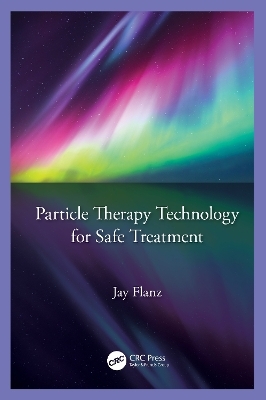
Particle Therapy Technology for Safe Treatment
CRC Press (Verlag)
978-0-367-64311-9 (ISBN)
The path from clinical requirements to technical implementation is filtered by the translation of the modality to the technology. An important part of that filter is that the modality be safe. For that to be the case, it is imperative to understand what clinical parameters affect the safety of a treatment and then determine how the technology can affect those parameters.
This book provides a practical introduction to particle therapy. It provides a thorough introduction to the technological tools and their applications and then details the components that are needed to implement them. It explains the foundations of beam production and beam delivery that serve to meet the necessary clinical requirements. It emphasizes the relationship between requirements and implementation, including how safety and quality are considered and implemented in the solution. The reader will learn to better understand what parameters are important to achieve these goals.
Particle Therapy Technology for Safe Treatment will be a useful resource for professionals in the field of particle therapy in addition to biomedical engineers and practitioners in the field of beam physics. It can also be used as a textbook for graduate medical physics and beam physics courses.
Key Features
Presents a practical and accessible journey from application requirements to technical solutions
Provides a pedagogic treatment of the underlying technology
Describes how safety is to be considered in the application of this technology and how safety and quality can be factored into the overall system
Author Bio
After receiving his PhD in nuclear physics, Dr. Jacob Flanz was the Accelerator Physics Group leader and Principal Research Scientist at the Massachusetts Institute of Technology (MIT), USA, where he designed the recirculator and the GeV stretcher/storage ring. He joined Massachusetts General Hospital (MGH) and Harvard and became project and technical director of proton therapy, with responsibility for specifications, integration, and commissioning ensuring safe clinical performance. He invented the universal nozzle and led the design and implementation of beam scanning at MGH in 2008, including quality assurance. Dr. Flanz has been involved in several FDA applications for particle therapy. He developed and taught the US Particle Accelerator School course "Medical Applications of Accelerators and Beams." He was cochair of education and is currently the president of the Particle Therapy Co-Operative Group.
Exercise solutions to accompany this book can be accessed via the 'Instructor Resources' tab on the book webpage.
Dr. Jacob Flanz is Associate Professor of Physics at Harvard University Medical School.After receiving his Ph.D. in nuclear physics, Dr. Flanz worked at the Massachusetts Institute of Technology. At MIT Dr. Flanz was the accelerator physics group leader and Principle Research Scientist. Included in the work done at MIT was the design, construction and commissioning of Recirculated beam equipment and a storage/stretcher ring with resonant extraction. Both of these projects used symmetry corrected optics invented by Dr. Flanz. Dr. Flanz joined the Massachusetts General Hospital and Harvard and became the Project Director and Technical Director of the Burr Proton Therapy Center. His involvement began during the proposal stages for this facility and participated in the development of the technical specifications required for a clinical Proton Therapy System. He was responsible for the system integration of the accelerator and clinical systems, and, working with vendors, to ensure that the technical systems were appropriate for the medical requirements. He contributed to the design and operational optimization of the proton therapy equipment and adaptation to the clinical uses. He played the leading role in the initial commissioning of the entire Proton Therapy system. A central focus for Dr. Flanz is the continuing upgrade of the beam delivery modality for optimal patient treatments. He led the effort for the development of the universal nozzle and the implementation, in 2008, of proton beam scanning at MGH including aspects of Quality Assurance methodology. He created the first United States Particle Accelerator School (USPAS) course on Beam Measurement at MIT. This was the first course where hands on experience was offered in beam tuning and measurement of beam properties. He developed and taught the USPAS course entitled “Medical Applications of Accelerators and Beams” numerous times. His commitment to Particle therapy extends beyond his employment. He was co-chair of the Educational Subcommittee of the Proton Therapy Cooperative Group (PTCOG) and is currently the President of PTCOG.
Chapter 1 Introduction. Chapter 2 Evolution of Medical Particles. Chapter 3 A Personal Historical Perspective. Chapter 4 Flow of Requirements. Chapter 5 External Beam Systems. Chapter 6 How to Damage Unwanted Cells. Chapter 7 Exponentials. Chapter 8 Relativistic Dynamics. Chapter 9 Charged Particle Interactions in Matter. Chapter 10 Review of Charged Particle Motion. Chapter 11 Clinical Perspective of Charged Particle Therapy Beams. Chapter 12 Three-Dimensional Dose Conformation. Chapter 13 Accelerator Systems. Chapter 14 Gantries. Chapter 15 Safety in Radiotherapy. Chapter 16 Sensitivities and Tolerances: Scattering. Chapter 17 From Clinical to Technical Tolerances: Scanning. Chapter 18 Afterword. Acknowledgments. Appendix A: Particle Therapy Facilities (as of June 2021). Appendix B: Some Useful Constants. Appendix C: Hazard Topics. Appendix D: Beam QA Frequency Possibility. Appendix E: Some Element and Compound Parameters. Index.
| Erscheinungsdatum | 14.11.2023 |
|---|---|
| Zusatzinfo | 37 Tables, black and white; 202 Line drawings, black and white; 94 Halftones, black and white; 296 Illustrations, black and white |
| Verlagsort | London |
| Sprache | englisch |
| Maße | 178 x 254 mm |
| Gewicht | 453 g |
| Themenwelt | Medizin / Pharmazie ► Allgemeines / Lexika |
| Naturwissenschaften ► Biologie | |
| Technik ► Umwelttechnik / Biotechnologie | |
| ISBN-10 | 0-367-64311-1 / 0367643111 |
| ISBN-13 | 978-0-367-64311-9 / 9780367643119 |
| Zustand | Neuware |
| Informationen gemäß Produktsicherheitsverordnung (GPSR) | |
| Haben Sie eine Frage zum Produkt? |
aus dem Bereich


